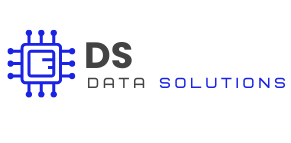In the world of data analysis, SAS (Statistical Analysis System) has long been a trusted tool. Developed by the SAS Institute, SAS is known for its robustness, scalability, and ability to handle complex data processing tasks. It’s widely used by professionals across industries for data management, advanced analytics, and predictive modelling. In this article, we’ll introduce SAS, explore its uses, and explain how it benefits data analysis.
What is SAS?
SAS is a software suite specifically designed for statistical analysis, data management, predictive analytics, and business intelligence. SAS combines advanced analytics and machine learning capabilities with user-friendly interfaces, enabling businesses to draw insights from their data. Known for its reliability and scalability, SAS is commonly used in industries like finance, healthcare, government, and academia, where data security and accuracy are critical.
Why is SAS Important in Data Analysis?
SAS offers a comprehensive solution for data manipulation, statistical analysis, and data visualisation. Here’s why it’s so widely used in data analysis:
- Built for Statistical Analysis: SAS was developed specifically for statistics, making it highly effective for complex data analysis tasks.
- Data Integration: SAS can connect to various data sources, including databases, spreadsheets, and cloud storage, simplifying data integration and analysis.
- Scalability and Reliability: SAS is designed to handle large data sets with ease, making it a preferred tool for enterprise-level data analysis.
- Security and Compliance: SAS provides advanced data security features, meeting strict compliance standards in regulated industries.
What SAS Can Do in Data Analysis
SAS offers a range of capabilities that empower data analysts and businesses to handle everything from basic data preparation to advanced predictive modelling. Here’s a look at some of the key tasks SAS can perform:
1. Data Cleaning and Preparation
Before analysis can begin, data often needs to be cleaned and prepared. SAS is highly effective in data cleansing and transformation, allowing analysts to manage missing values, standardise formats, and correct inconsistencies. Data preparation is crucial for ensuring data accuracy and integrity, and SAS streamlines this process, even with large or complex data sets.
Use Case: In the healthcare sector, patient data often contains inconsistencies or missing values. A healthcare analyst can use SAS to clean and standardise patient records, ensuring the data is accurate for clinical analysis or reporting.
2. Statistical Analysis and Hypothesis Testing
SAS was initially developed for statistical analysis, and it remains one of the most powerful tools for performing complex statistical tests and analyses. SAS can handle a wide range of statistical methods, from descriptive statistics to advanced hypothesis testing, making it ideal for industries where data-driven decision-making is essential.
Use Case: A retail company may use SAS to analyse customer purchasing behaviour, applying statistical tests to determine whether a recent promotion significantly impacted sales. This data-driven approach allows businesses to validate marketing strategies and refine them based on evidence.
3. Data Visualisation and Reporting
SAS includes tools for data visualisation and custom reporting, enabling analysts to communicate insights clearly. By transforming raw data into graphs, charts, and dashboards, SAS helps decision-makers understand complex information at a glance. Visualisation tools make it easy to identify patterns, trends, and outliers, enhancing data comprehension.
Use Case: A financial analyst may use SAS to create visual reports on quarterly revenue trends, showing executives how various product lines performed over time. Visualisation enables stakeholders to make informed decisions based on a clear representation of the data.
4. Predictive Modelling and Machine Learning
SAS provides robust predictive modelling and machine learning capabilities, enabling analysts to build models that forecast future outcomes. With tools for regression analysis, decision trees, neural networks, and clustering, SAS supports a variety of predictive techniques that drive business insights.
Use Case: An insurance company can use SAS to predict claims frequency among policyholders, allowing them to adjust premiums accordingly. By identifying high-risk customer segments, the company can implement targeted strategies to manage risk and maintain profitability.
5. Time-Series Analysis and Forecasting
For businesses that rely on understanding trends over time, SAS offers advanced time-series analysis and forecasting capabilities. These tools allow businesses to analyse historical data and predict future trends, such as sales, stock prices, or seasonal patterns. SAS’s time-series capabilities are widely used in finance, economics, and supply chain management.
Use Case: A supply chain manager might use SAS to forecast seasonal demand for specific products, helping them optimise inventory levels and reduce stockouts during peak seasons.
6. Text Analytics and Sentiment Analysis
SAS has advanced tools for text analytics and sentiment analysis, enabling businesses to extract insights from unstructured text data, such as social media comments, customer reviews, and survey responses. By analysing text data, organisations can understand customer sentiment, identify trends, and respond proactively to customer needs.
Use Case: A telecommunications company may use SAS to analyse customer complaints on social media, identifying recurring issues and trends. This information can help improve customer service and address product issues before they escalate.
7. Data Mining for Patterns and Insights
Data mining is a process of discovering patterns, correlations, and trends in large data sets. SAS offers tools for data mining, which are invaluable for uncovering hidden insights in customer data, sales records, or transaction histories. By identifying relationships within data, businesses can make informed decisions to enhance growth and performance.
Use Case: An e-commerce business might use SAS data mining tools to identify which customer segments are most likely to respond to a promotional email. This insight enables them to target campaigns more effectively, maximising engagement and conversion rates.
8. Quality Control and Process Optimisation
SAS is commonly used in manufacturing and healthcare for quality control and process optimisation. By analysing process data, SAS can identify inefficiencies, monitor quality standards, and implement control measures to ensure consistent output. Quality control tools in SAS are especially valuable for industries that require strict regulatory compliance.
Use Case: A pharmaceutical company can use SAS to monitor the quality of its production processes, ensuring compliance with regulatory standards. By identifying and addressing inconsistencies, the company maintains product quality and avoids costly recalls.
Advantages of Using SAS in Data Analysis
SAS offers several advantages for data analysts and organisations:
- Comprehensive Analysis: With a range of statistical and analytical functions, SAS covers everything from data preparation to complex modelling.
- User-Friendly Interfaces: SAS provides graphical interfaces that make it accessible for non-programmers, while also offering coding options for advanced users.
- Highly Secure: Known for its data security and compliance capabilities, SAS is ideal for handling sensitive data, making it popular in regulated industries.
- Scalability: SAS can handle large data volumes efficiently, making it suitable for enterprise-level applications.
- Reliable Customer Support: SAS Institute offers extensive customer support, including documentation, training, and certification programs.
Who Uses SAS?
SAS is widely used by data analysts, statisticians, and business intelligence professionals across various industries:
- Finance and Banking: For credit scoring, fraud detection, and risk analysis.
- Healthcare: For clinical trial analysis, patient data management, and quality control.
- Retail: For customer segmentation, sales forecasting, and targeted marketing.
- Government: For public health analysis, census data management, and economic forecasting.
- Manufacturing: For quality control, process optimisation, and demand forecasting.
Getting Started with SAS
While SAS is known for its power, it’s also accessible for beginners. Many analysts start with SAS’s visual interfaces, which make it easy to perform basic data analysis tasks without advanced programming knowledge. As users become more familiar, they can move on to using SAS coding, which provides greater control and flexibility.
SAS Institute offers a variety of resources to help new users get started, including online tutorials, training courses, and certification programs. These resources provide a structured path for learning the software, from basic data handling to advanced statistical modelling.
Leverage SAS Expertise with DS Data Solutions
SAS is a comprehensive tool for data analysis, offering powerful solutions for data cleaning, statistical analysis, predictive modelling, and more. At DS Data Solutions, we specialise in helping businesses make the most of SAS for data-driven decision-making. Our team of experts provides support in implementing SAS solutions that meet your unique needs, from business intelligence to advanced analytics.
Ready to unlock the full potential of your data with SAS? Contact DS Data Solutions today to learn how our expertise can help you streamline data analysis, optimise processes, and gain valuable insights.


